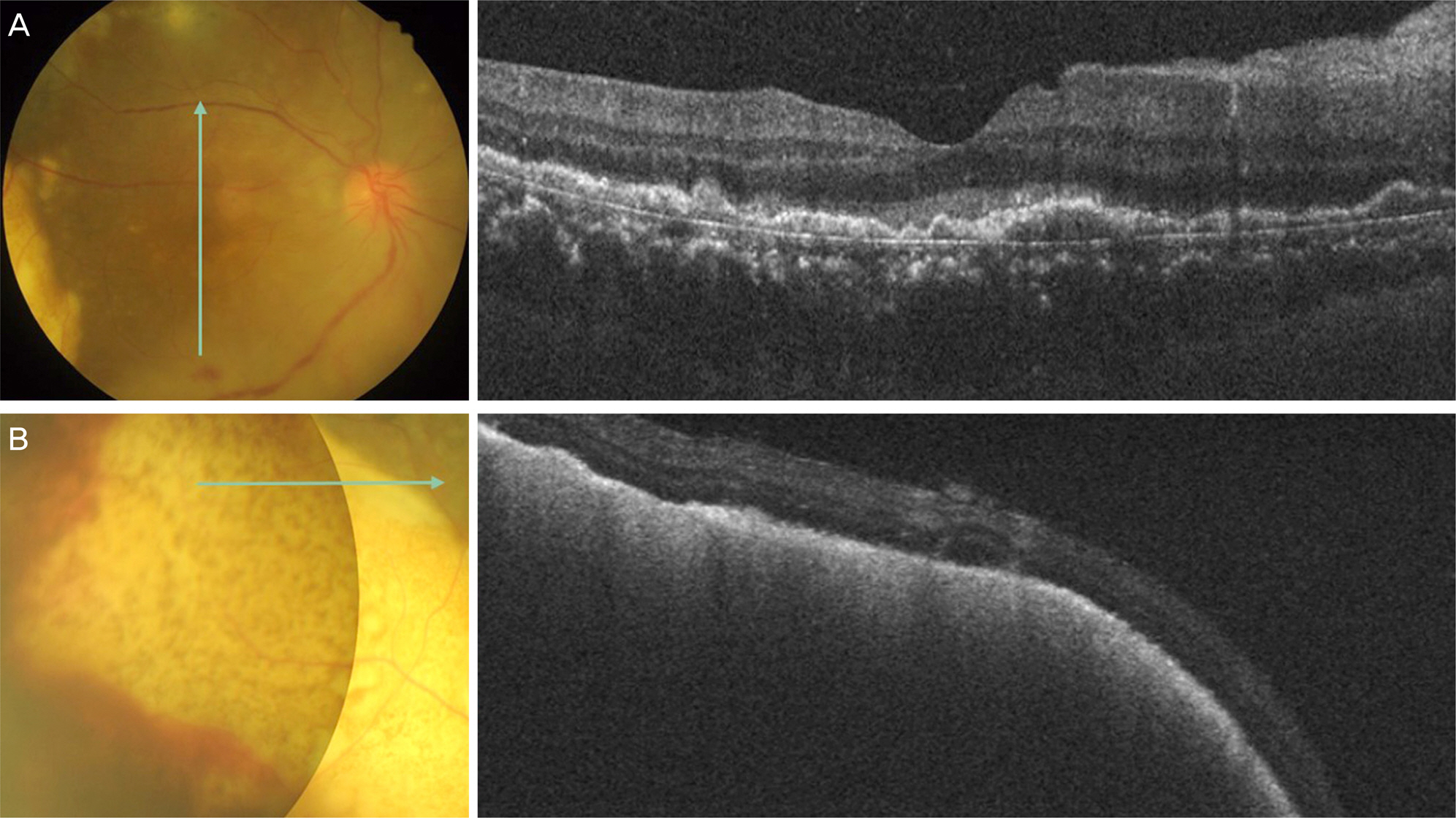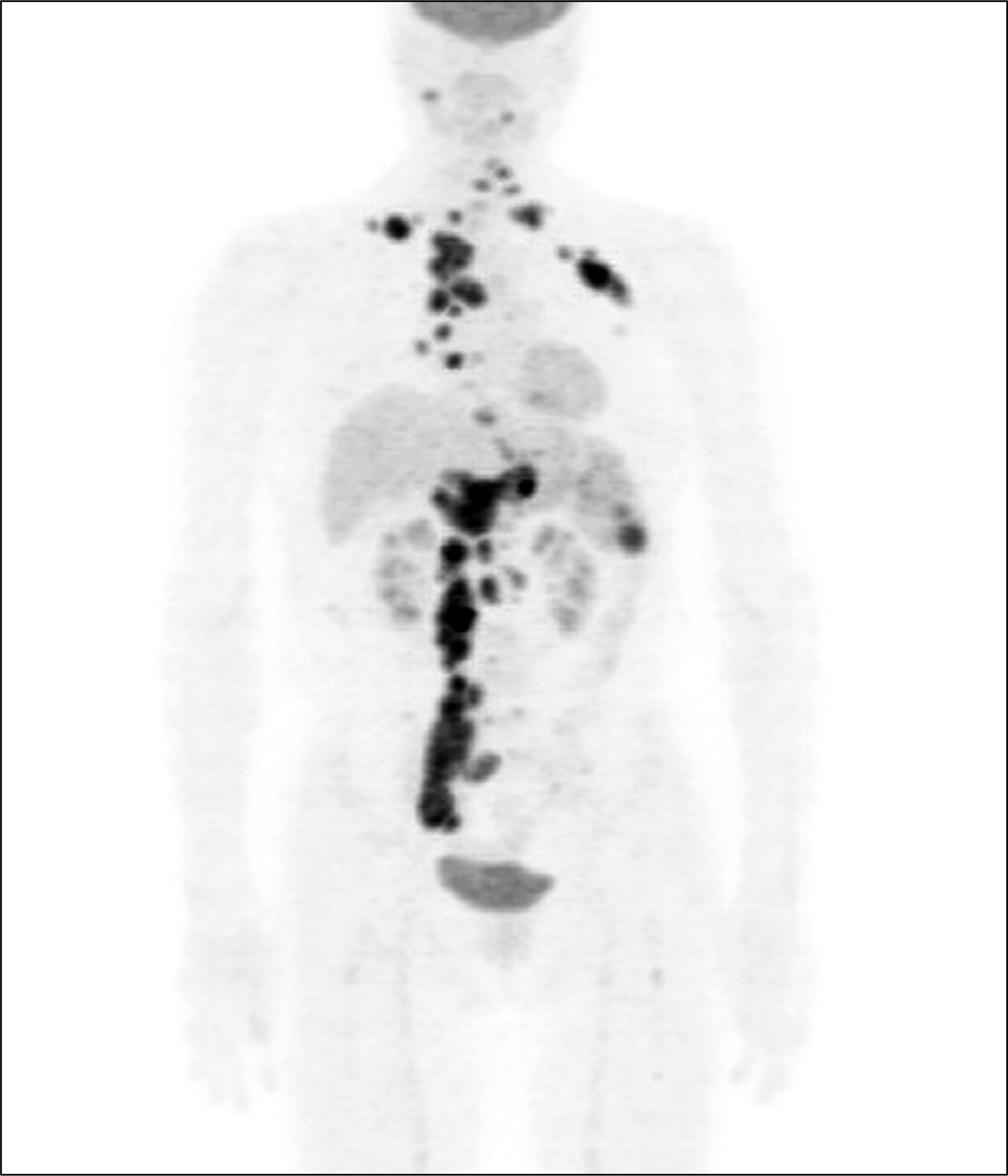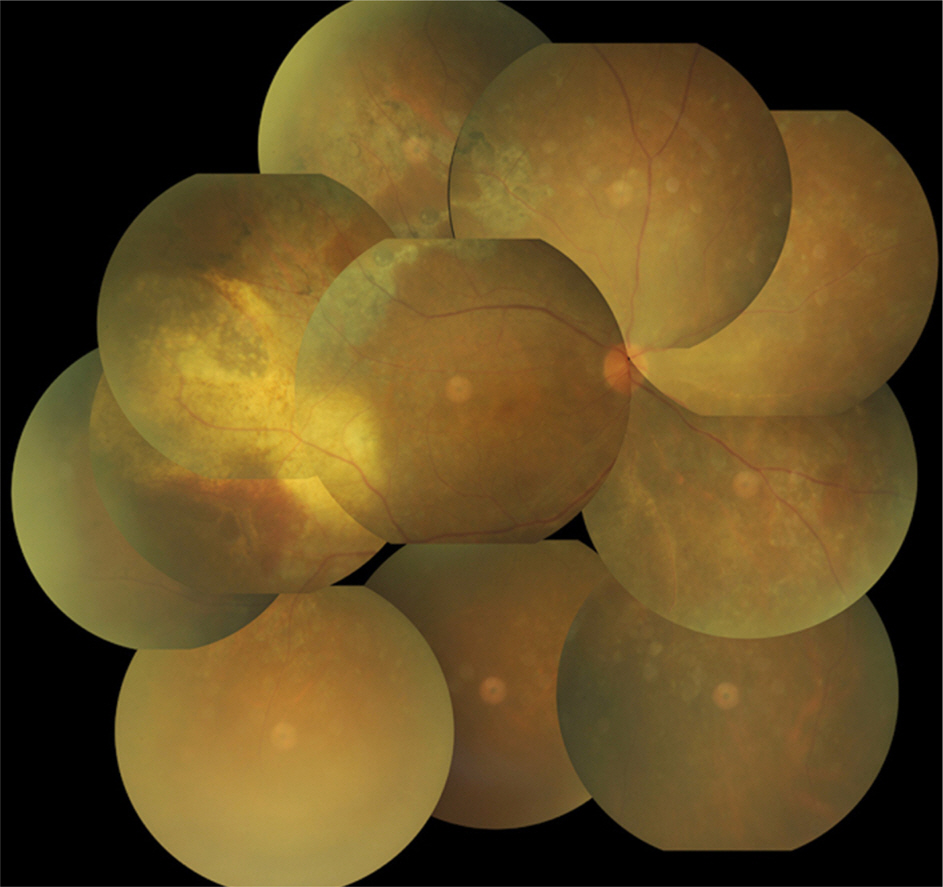J Korean Ophthalmol Soc.
2015 Mar;56(3):458-462. 10.3341/jkos.2015.56.3.458.
Secondary Choroidal Lymphoma Associated with Systemic Choroidal Lymphoma
- Affiliations
-
- 1Department of Ophthalmology, Daegu Catholic University Medical Center, Catholic University of Daegu School of Medicine, Daegu, Korea. yykim@cu.ac.kr
- KMID: 2339056
- DOI: http://doi.org/10.3341/jkos.2015.56.3.458
Abstract
- PURPOSE
To report a case of secondary choroidal lymphoma.
CASE SUMMARY
A 57-year-old female presented at our clinic with decreased vision in her right eye 1 month in duration. Slit-lamp examination showed vitreous cells in the right eye. Fundus examination of the right eye revealed an elevated yellowish mass-like lesion at the temporal area and multifocal yellowish patches at the choroidal level. The clinical impression was intraocular lymphoma. We performed diagnostic vitrectomy, but the result was negative. A systemic evaluation revealed enlarged cervical lymph nodes and lymph node biopsy showed diffuse large B-cell lymphoma. The patient was diagnosed as secondary choroidal lymphoma associated with systemic lymphoma and was treated with systemic chemotherapy and 4 injections of intravitreal methotrexate. The patient is scheduled for regular follow-ups.
CONCLUSIONS
Choroidal mass may be the initial presenting sign of systemic lymphoma, and an extensive systemic evaluation should be performed.
MeSH Terms
Figure
Reference
-
References
1. Chan CC, Rubenstein JL, Coupland SE, et al. Primary vitreoretinal lymphoma: a report from an International Primary Central Nervous System Lymphoma Collaborative Group symposium. Oncologist. 2011; 16:1589–99.
Article2. Turaka K, Bryan JS, De Souza S, et al. Vitreoretinal lymphoma: changing trends in diagnosis and local treatment modalities at a single institution. Clin Lymphoma Myeloma Leuk. 2012; 12:412–7.
Article3. Coupland SE, Damato B. Understanding intraocular lymphomas. Clin Experiment Ophthalmol. 2008; 36:564–78.
Article4. Apte RS, Al-Abdulla NA, Green WR, et al. Systemic non-Hodgkin B-cell lymphoma encountered as a vanishing choroidal mass. Arch Ophthalmol. 2005; 123:105–9.
Article5. Leff SR, Shields JA, Augsburger JJ, et al. Unilateral eyelid, conjunctival, and choroidal tumours as initial presentation of diffuse large-cell lymphoma. Br J Ophthalmol. 1985; 69:861–4.
Article6. Triebenstein O. Ein beitrag zur frage der aleukämischen augen- veränderungen. Klin Monatsbl Augenheilkd. 1920; 64:825–36.7. Mashayekhi A, Shukla SY, Shields JA, Shields CL. Choroidal lymphoma: clinical features and association with systemic lymphoma. Ophthalmology. 2014; 121:342–51.8. Shields CL, Arepalli S, Pellegrini M, et al. Choroidal lymphoma shows calm, rippled, or undulating topography on enhanced depth imaging optical coherence tomography in 14 eyes. Retina. 2014; 34:1347–53.
Article9. Gass JD, Weleber RG, Johnson DR. Non-Hodgkin's lymphoma causing fundus picture simulating fundus flavimaculatus. Retina. 1987; 7:209–14.
Article10. Rattray KM, Cole MD, Smith SR. Systemic non-Hodgkin's lymphoma presenting as a serpiginous choroidopathy: report of a case and review of the literature. Eye (Lond). 2000; 14(Pt 5):706–10.
Article
- Full Text Links
- Actions
-
Cited
- CITED
-
- Close
- Share
- Similar articles
-
- Secondary Cutaneous Involvement of Marginal Zone B Cell Lymphoma Developed in a Patient with Systemic Lupus Erythematosus
- Clinical Manifestations of Intraocular Lymphoma
- Pigmented Choroidal Metastases Masquerading as Choroidal Melanoma
- Fluorescein and Indocyanine Green Angiography of Choroidal Tumors
- Availability of Optical Coherence Tomography in Diagnosis and Classification of Choroidal Neovascularization






